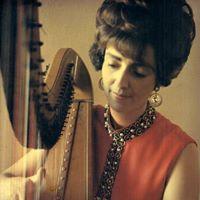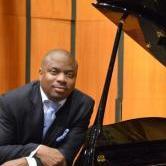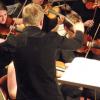Leaderboard
Popular Content
Showing content with the highest reputation on 04/15/2012 in all areas
-
Here is a YouTube video I put up recently describing the difference between sharps and flats: It requires a little prerequisite theory knowledge, though I hope it's accessible. Here is the video transcript: "What is the difference between F sharp and G flat?" It's a question asked often enough, but what comes along less often is a satisfactory answer. It is my hope that by the end of this video you will have not only an understanding of WHY there's a difference, but an understanding of how to use that difference to make, play, and talk about music more effectively. Let's start with a staple of music theory: the spiral of fifths. It shows that, starting from the naturals and using a chain of fifths, you can arrive at every note we could ever use in western music: The sharps, the flats, the double sharps, the double flats, and so on. Also, notice that we can derive any diatonic scale from a continuous, unbroken chain of seven fifths. For one example, the G major diatonic scale can be generated from a chain of fifths from C to F#, which rearranges to G-A-B-C-D-E-F#. Neither of those facts is coincidence. In fact it is by this chain of fifths that we DEFINE the notes that EXIST in western music, and it is by any 7 notes connected by an unbroken chain of fifths that we DEFINE our diatonic scales. So most simply, the difference between F# and Gb is each's different location in the spiral of fifths, and therefor the scales to which they do and do not belong. If you're using the G major scale, the right note is F#, and if you're using the Db major scale, Gb is the correct note. But let's delve a little further and ask "So what?" If they're the same pitch, why define things that way? First, know that intervals are measured in a unit called "cents" where there are 1200 in every octave, 100 cents per half step, and therefore 700 cents per fifth, at least in standard western tuning. Let's prove that F# equals Gb specifically because the fifth is 700 cents. From F# to Gb in fifths is F#-B-E-A-D-G-C-F-Bb-Eb-Ab-Db-Gb, or 12 fifths. Starting with Gb at 0 cents, and adding 12 fifths * 700 cents/fifth gives you 8400 cents. Dropping that note into the original octave by subtracting 6 octaves, 8400 cents - 1200 cents per octave times 6 octaves gives you 8400 cents minus 8400 cents, which comes out to 0 cents. Because 0 cents is a unison, F# is equal to Gb. The G major scale and I IV V I progression using these pitches sound like this: ~~~~~~~~~~~~~~ And the same pattern but replacing Gb for F# sounds exactly the same. The size of the fifth can change however, and when it is not exactly 700 cents then F# and Gb actually have DIFFERENT PITCHES. Motivations for adjusting the size of the fifth in the first place include better harmonic purity ("more in-tune") or melodic clarity (with a starker contrast between major and minor). Still, the over all musical structures stay pretty much the same. If we flat the fifth a nearly imperceptible 5 cents to 695 cents: From F# to Gb in fifths is still F#-B-E-A-D-G-C-F-Bb-Eb-Ab-Db-Gb, or 12 of these slightly flatter fifths. 12 fifths * 695 cents/fifth = 8340 cents Dropping that note down 6 octaves gives 8340 cents - 8400 cents = -60 cents. That means that, with a fifth of 695 cents, F# differs from Gb by 60 cents! The G major scale and I IV V I progression using these new pitches sound like this: ~~~~~~~~~~~~~~~ Different nuances from before, but recognizably the "same thing". The same pattern but replacing Gb for F# sounds like this: ~~~~~~~~~~~~~~ It's completely different, and quite wrong for that "major scale" sound we all know and love. Why would it turn out that F# sounds so much better in this context than Gb? Well, the decision to define our scales by unbroken chains of fifths is not arbitrary. Scales created by continuous unbroken chains of one given interval have perceptually relevant properties in music, where intervals sizes are regular (with only two sizes per interval class, aka major and minor), and where the different step sizes are distributed evenly throughout the scale. (For example, the diatonic scale has the minor seconds as far apart as possible between the major seconds.) Such scales are called "Moment of Symmetry" (or MOS) scales. Replacing a note like F# with another note like Gb, though they may be close in pitch, disrupts this regularity, and voids the definition of MOS. You imply this difference between the sharps and flats even when using standard western tuning with a fifth of 700 cents, where F# and Gb are the same pitch. *This*, ladies and gentlemen, is the difference between the sharps and the flats. They differ in their location in the spiral of fifths, which describes their difference in function, which is audible in tunings where the fifth is not 700 cents. Curious about playing and composing music in different tunings? Check out some of these links!1 point
-
My name is Shirley Meyer Blankenship (harpist/composer). In the 70's, I taught harp and music theory at the University of Illinois where I was the first woman to receive a Doctorate of Musical Arts Degree in composition. Currently I am the principal harpist with the Champaign-Urbana Symphony. It has been all too often that I have encountered harp parts that were, at best, awkward and, at worst, impossible to perform. Major issues that are obstacles for composers involve the need for placing before pulling the strings, pedal markings, the creation of accessible structures, and the designing of notation that accurately depicts the interchanging use of the hands. After years of dealing with problematic parts, I initiated this project entitled The Harp Legacy Project. Via this venue, it is my mission to assist composers in the creation of notation that is comprehensible to harpists. www.theharplegacyproject.com In order to accomplish this mission, I am offering my services as an editor/consultant to composers wishing to participate. In this capacity, I can contribute my skills and expertise to the benefit of both harpists and composers. Like the historical model of Les Six, the group of participating composers could generate a significant body of harp music for the present and next generations and significatnly contribute to the development of viable harp notation After receiving a score, preferably in a pdf format, I will assess a fee and once agreed upon, I will commence with the editing process. Upon completion, I will email (or snail mail if the edit markings are not clear after scanning them into the computer) my comments back to the composer who then can make revisions. Any arising problematic issues can be dealt with via one or more phone conversations. All of the scores that I edit will be donated to the Sousa Archives, University of Illinois, where my life and works are being preserved. Also, by agreement, hard copies will be placed in the music library under the umbrella of The Harp Legacy Project. This project has the potential of creating a direction for the present and future generations of composers interested in the development of creative harp notation that is accessible to harpists. My experience with contemporary harp music is discussed in the following article: SHIRLEY MEYER BLANKENSHIP: CONTEMPORARY HARP MUSIC: COMPOSITIONAL ISSUES IN THE MUSIC OF: RANDS, BRUN, BLANKENSHIP, MARTIN, HAKEN, BERG, BAXTER, ROUSE, JOLIVET TOPICS: SPECIAL HARP NOTATION PEDAL ISSUES PLACEMENTS ENHARMONIC SPELLINGS CHORDAL SPACINGS CHROMATICISM This article is posted on my website along with testimonials, before and after pages where you can compare original scores with the edited versions along with commentary, and a list of compositions that are under the umbrella of The Harp Legacy Project. Testimonial July 26, 2011 Earlier this month I contacted Shirley Meyer Blankenship to seek her advice and assistance with the harp part of a trio that I had recently written. Her expertise and knowledge of the harp was evident almost immediately when I spoke to her on the phone the first time. And within only a few short hours over a three or four day period, we were able to transform my piece into a truly delightful work of art - it went from good great. Her suggestions to alter and even rewrite portions of the part made it completely playable and viable for live performance without compromising the integrity of the work. I couldn't be happier with the outcome, and the feedback I've received on the piece since has been extraordinary. As a result, a premiere performance is in the works! Bravo, Shirley! Thank you for the passion you have for your craft! Timothy Lee Miller Composer Thank you for your kind attention!1 point
-
Hi Dominic, Following are my responses to your question in BOLD " lemme get this straight..... We compose a piece, and you arrange it No, I just edit it by making suggestions to you that you are not obligated to incorporate and possibly I might suggest the rearrangement of some notes to facilitate performance ..... and possibly publish it as your own I don't publish your work rather I donate your composition to the Sousa Archives under YOUR name with my name listed only as the editor/consultant. This way your work has some chance of being preserved. My work is essentially that of an editor and since my work is being preserved, yours can be also. You retain all rights to your music. I don't have to donate your work if that isn't acceptable to you. And we try to publish our works and we get caught for copyright infringement? " What Shirley is offering is her help as both a very experienced composer and as an harpist, to improve the harp parts of our compositions. Only that (as far as I believe), she'd like to have the scores she edits preserved. The editing is part of my work and therefore would be acceptable to the archives. And also she's attempting to reunite a library of works for harp by modern composers, in a way that is easy for performers to access - but only upon agreement. In this way, this would be actually helpful for both - we can improve our harp writing, and our works become accessible for performers. Nevertheless, additional explanation would be helpful. Thank you Austenite for your clarifying commentary. Perhaps a visit to my website would provide additional helpful information. My mission is to assist composers with their harp notation so that their scores become maximally accessible to harpists. www.theharplegacyproject.com1 point
-
How many times have you heard that you CAN'T make money in classical music. I'm like, this is a bad philosophy to teach. I mean, what are we in academia doing if one can't make a living. I'm not saying Quincy Jones rich, or even sticking in the same vein as classical music, say William Bolcom or Frank Tichelli. HOWEVER, there is a flaw with this type of thinking. Now we have to think OUTSIDE of the box. Therefore, I like to say, "you can make money with classical chops!" I'll add more later!1 point
-
1 point






